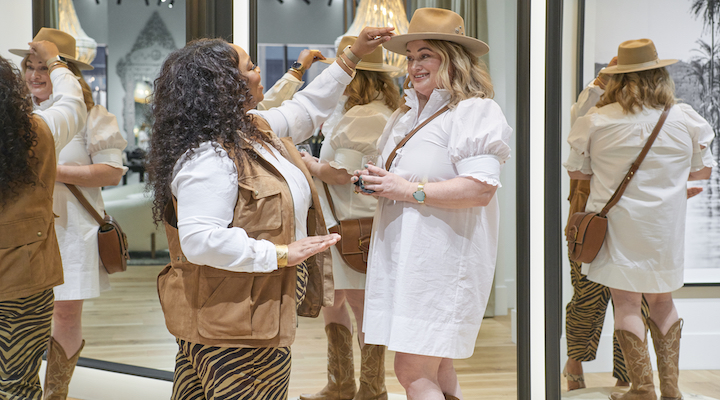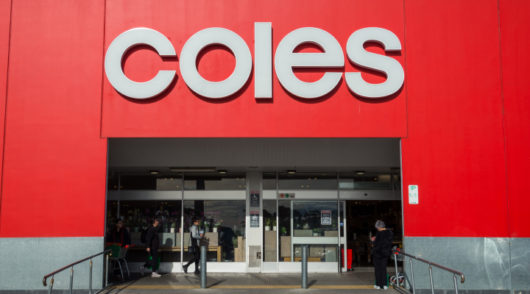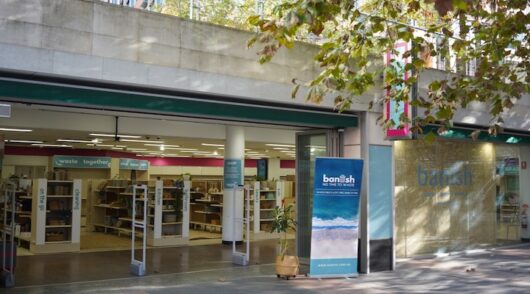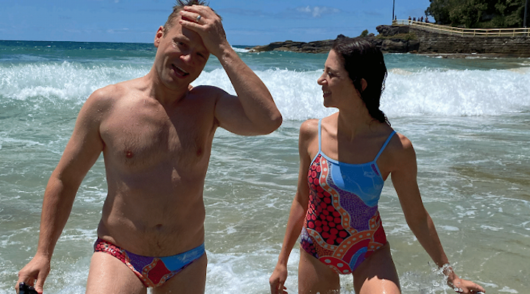Embattled US fashion company Gap has reported an 8 per cent decline in second-quarter sales to US$3.55 billion as its market share continues to erode.
Over the past two years, Gap’s sales are down by 15.7 per cent according to figures from GlobalData MD Neil Saunders.
“While the apparel market has been challenged, this is a far worse performance than average and represents a significant erosion of market share,” he said.
Comp-store sales were down 6 per cent for the quarter and online turnover fell by 11 per cent.
The company’s operating income was just $106 million, resulting in an operating margin of 3 per cent. Its adjusted net income of $127 million excluded restructuring costs.
Describing the results as “far from good” Saunders said new CEO Richard Dickson, who started the role this week, faces something of a mountain to climb in terms of rebuilding the business given “the dire state of the company and its various brands”.
“His initial sentiments, stressing the need to do things differently and to redefine the brands so that they have meaning to consumers, are very sensible. We only hope that the usual inertia of Gap doesn’t grow like weeds over his ambitions.”
Every Gap brand firmly in decline
All of Gap’s brands are now firmly in decline, including the recent star performer Athleta, which saw sales dip by 2.4 per cent year on year.
The group’s lead namesake brand Gap saw sales plunge 14 per cent to $755 million, however a large part of this was due to the sale of the Gap China business, the closure of Yeezy Gap and the negative impacts of foreign exchange fluctuations. Excluding all that, sales were down by a net 4 per cent, the company said.
Old Navy also met headwinds with net sales down by 6 per cent to to $1.96 billion, and Banana Republic fell by 11 per cent to $480 million.
“While Banana Republic maintained market share in the quarter, sales growth remains impacted in the short-term as the brand laps the outsized growth last year driven by the shift in consumer preferences,” Gap said.
The company put a positive spin on its predicament with executive VP and CFO Katrina O’Connell saying the group was focused on the long term, its focus on “unlocking the value of our important and iconic brands coupled with the transformative actions we are taking to improve our operating structure”.
Meanwhile, Dickson, who is also president, said there were “encouraging signs of progress” as the company’s teams streamline the way they work to enable a focus on growth-driving initiatives – “a virtuous cycle that we’ll look to become our norm”.
“This means we have to do things differently, with a clear focus on redefining our brands’ meaning to consumers, focusing on creativity, designing for relevance as a pursuit rather than a goal, and leveraging our remarkable legacy to shape an exciting new future,” he said.
Nevertheless, Gap is predicting a decline in third-quarter sales as well – “in the low double-digit range compared to last year’s net sales of $4.04 billion”.
The company said a significant factor in Gap’s recent decline was the group’s sale of its China business to online group Baozun, which closed on January 31, with third-quarter FY22 sales by Gap China running to about $70 million.
“The company anticipates that fiscal 2023 net sales could decrease in the mid-single digit range compared to last year’s net sales of $15.6 billion. As a reminder, fiscal 2022 net sales included approximately $300 million in sales for Gap China.” But adding a 53rd week into FY23’s figures will boost sales by $150 million, the company said.
Saunders did note that after a loss of $49 million in the same quarter last year, a $117 million profit was a positive step. “Better inventory management resulting in fewer markdowns and lower freight costs were helpful to the number.
“However, aside from this small comfort, Gap isn’t in a good place. It means the new CEO will have a baptism of fire as he starts the long hard slog of trying to restore a once iconic company to its former glory.”
Boring, lacklustre assortments
By brand, Saunders said Old Navy was challenged by its core family shopper being under a significant amount of financial pressure and cutting back on spending as a result – “but to nowhere near this degree”.
“That means that part of Old Navy’s problem is that its shoppers are defecting to buy apparel elsewhere. While some of this is the result of people seeking out lower-priced alternatives, some is also a consequence of boring ranges and styles at Old Navy. In our view, the brand has lost its edge and is churning out more of the same season after season, rather than being led by trends. This, combined with a more cautious consumer, is a losing combination.”
He said selective store closures had not helped the Gap brand, where sales fell 4.1 per cent in the US market and described the product assortment as “lacklustre”.
“Like Old Navy, Gap is incredibly boring and does very little to entice customers into buying its products – especially not at the high full prices it charges, hence why it so often resorts to discounting to shift stock,” he observed. “The Gap brand has long been the problem child of the group, and its relevance in the market is one of the biggest issues new management will need to tackle if they want to turn around the fortunes of the company.”
He had some sympathy for Banana Republic, however, noting a “genuine effort” made to enhance the experience, products, and the wider proposition at Banana.
“Unfortunately, some initial effort has not been maintained and this, along with a softer market which is less interested in smart-casual, has put an abrupt end to growth.”






